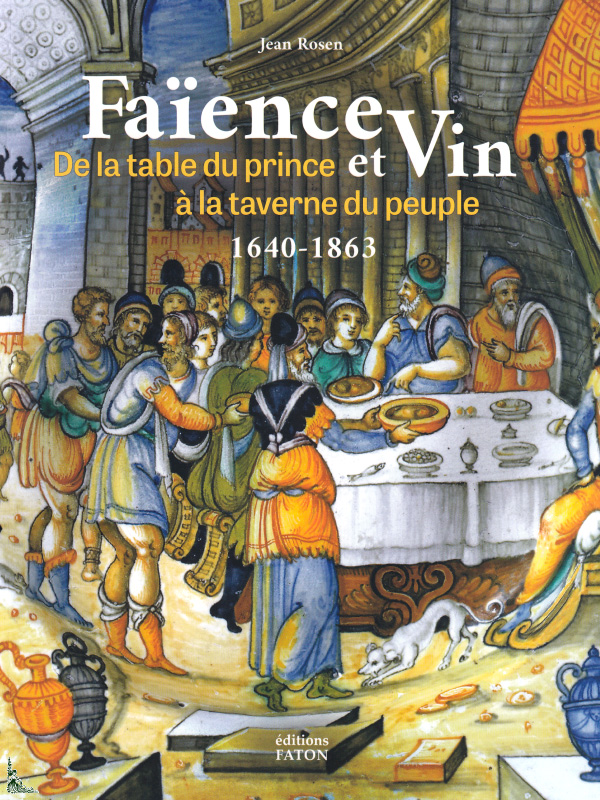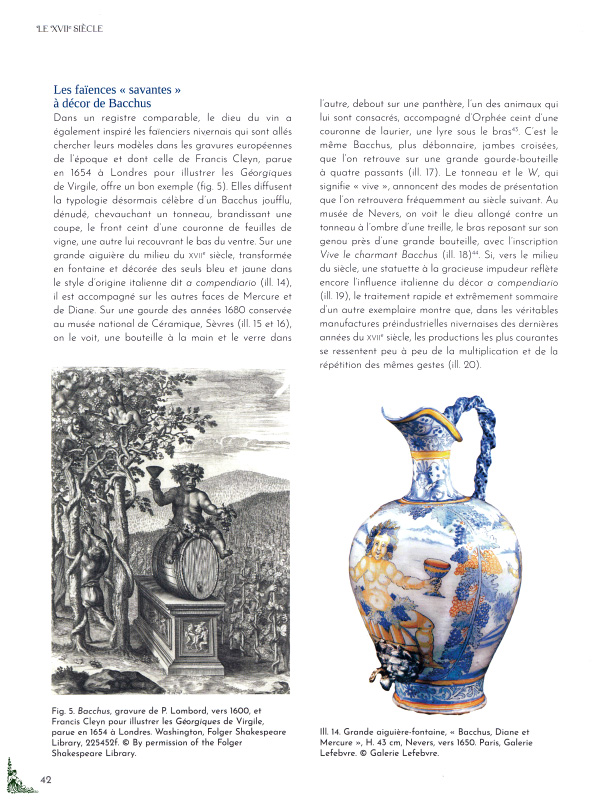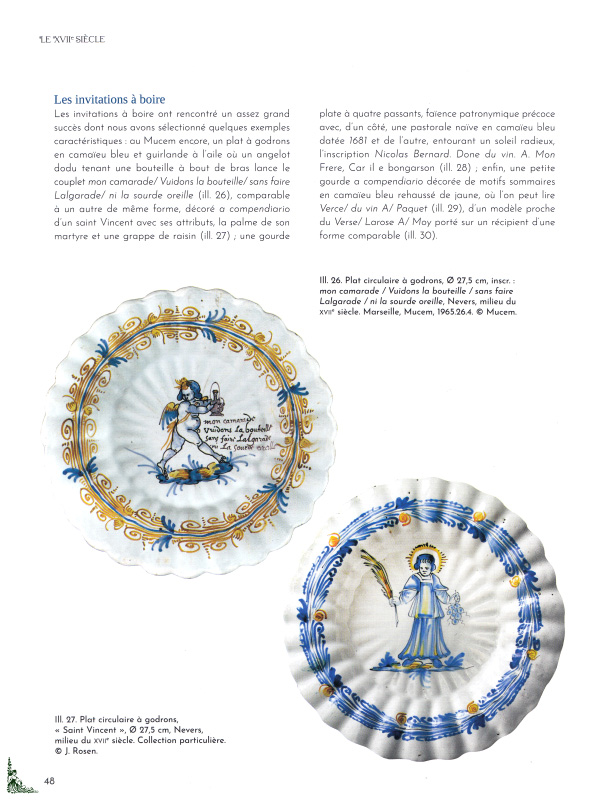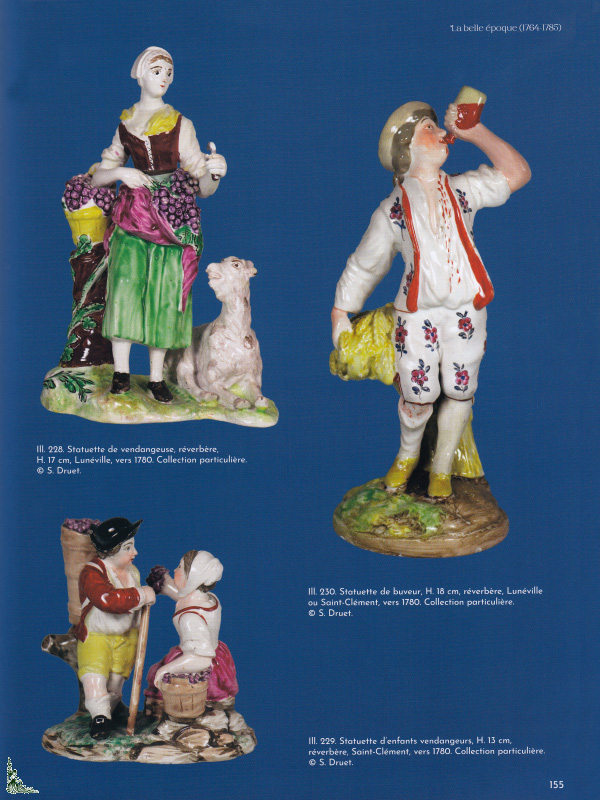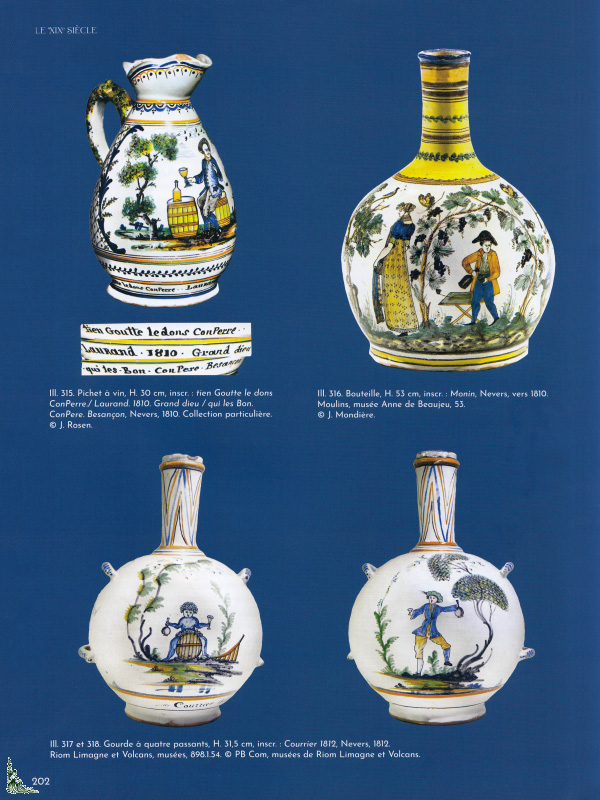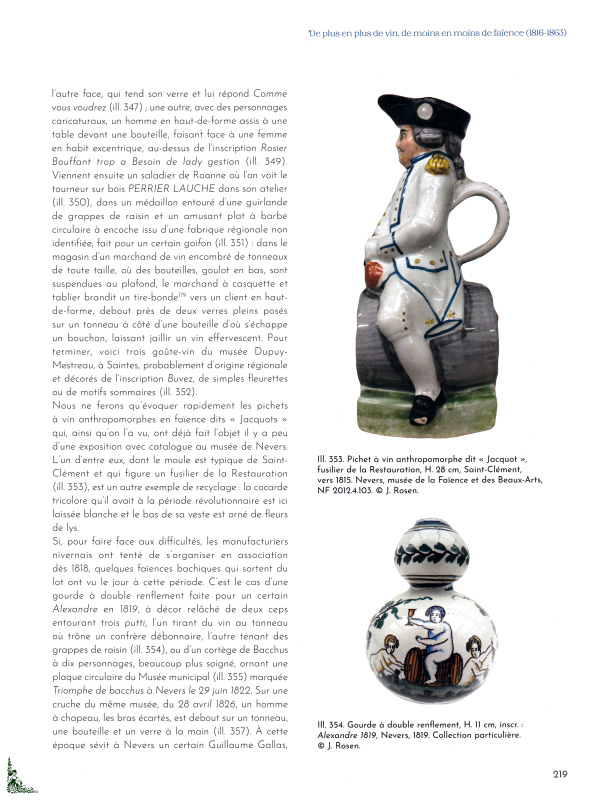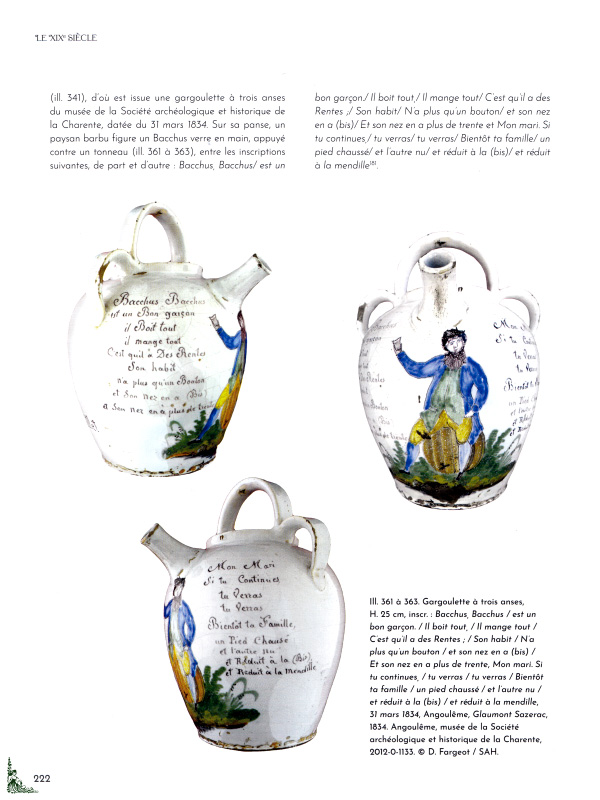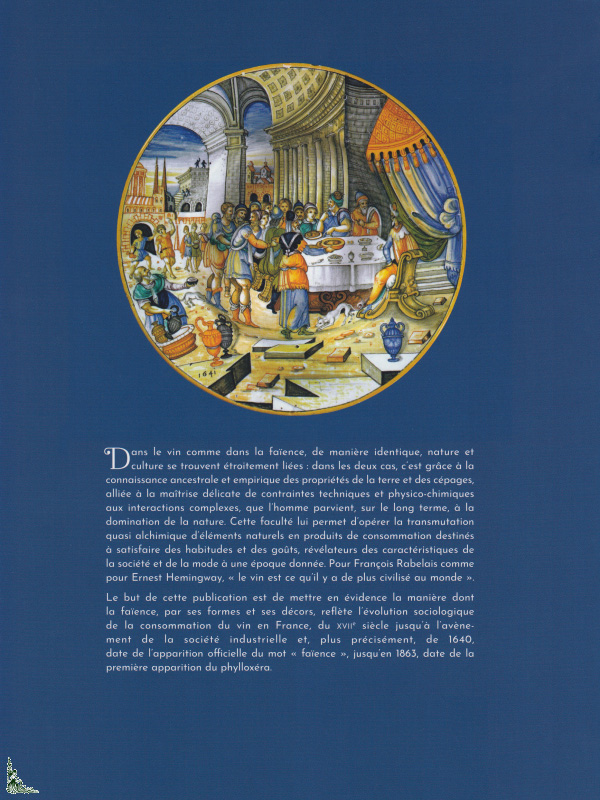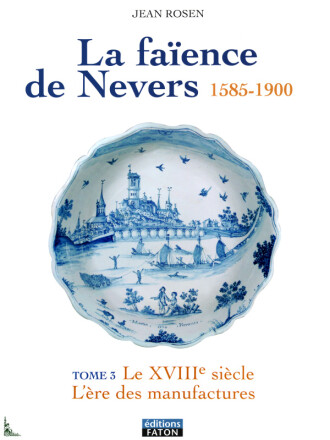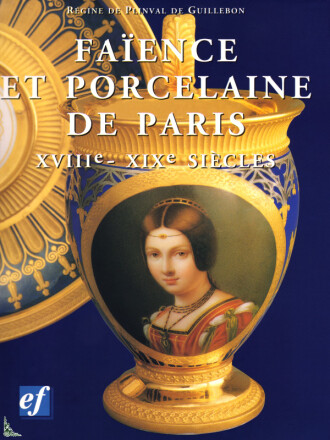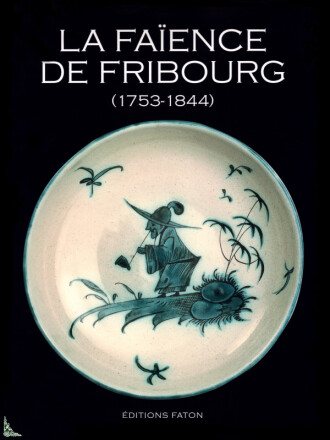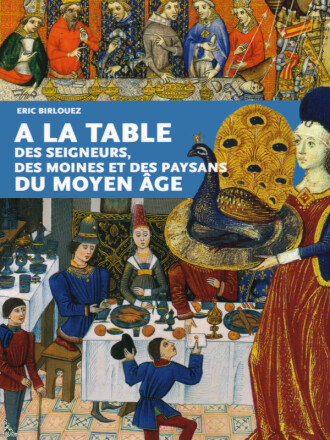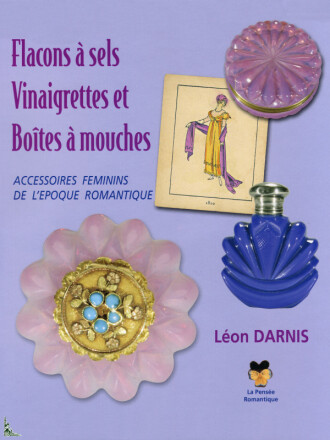Earthenware and wine, from the prince's table to the people's tavern (1640 - 1863)
この本の詳細
| 著者 : | Jean Rosen |
| 出版業者 : | Faton (2022) |
| 不良部分 : | Softcover (240 full color pages) 8 inches x 10-½ inches |
| 言語 : | French |
| ISBN : | 978-2-87844-244-1 |
| EAN : | 9782878442441 |
記述
Earthenware and wine, from the prince's table to the people's tavern (1640 - 1863), by J. Rosen, Ed. Faton, 8 inches x 10-½ inches ( 21 cm x 27 cm ), softcover book with 240 full color pages
This softcover book with 240 full color pages richly illustrated presents faience, mainly from Nevers, on wine from 1640 to 1863.
In wine as in earthenware, in the same way, nature and culture are closely linked: in both cases, it is thanks to the ancestral and empirical knowledge of the properties of the land and the grape varieties, combined with the delicate mastery of technical and physico-chemical constraints, with complex interactions, that man manages, in the long term, to dominate nature. This faculty allows him to operate the quasi alchemical transmutation of natural elements into consumer products intended to satisfy habits and tastes, revealing the characteristics of society and fashion at a given time.
For François Rabelais as for Ernest Hemingway, "wine is the most civilized thing in the world".
The purpose of this publication is to highlight the way in which earthenware, through its shapes and decorations, reflects the sociological evolution of wine consumption in France, from the 17th century until the advent of industrial society and, more precisely, from 1640, date of the official appearance of the word "faience", until 1863, date of the first appearance of phylloxera.
Contents:
- A little history
- Preface by Denis Thuriot
- Preface by Dominique Hutin
- The 17th century
- The «beverage revolution»
- Nevers, earthenware capital (1585 - 1642)
- Bacchic Nivernaise earthenware in the 17th century
- The 18th century
- From 1700 to the «revolution of 1720»
- From the «revolution of 1720»to the Treaty of Paris (1763)
- From the Treaty of Paris to the end of the century (1764 - 1799)
- La belle époque (1764 - 1785)
- A difficult end of the century (1786 - 1799 )
- The 19th century
- A half-hearted recovery ( 1800 - 1815)
- More and more wine, less and less earthenware (1816 - 1863)
- Conclusion
- Bibliography
The French texts are written by Jean Rosen.
 Description française
Description française
Faïence et Vin, de la table du prince à la taverne du peuple (1640 - 1863)
Détails du livre
| Auteur : | Jean Rosen |
| Éditeur : | Faton (2022) |
| Reliure : | Broché (240 pages couleurs) 21 cm x 27 cm ( 8 inches x 10-½ inches ) |
| Langue(s) : | Français |
| ISBN : | 978-2-87844-244-1 |
| EAN : | 9782878442441 |
Description
Faïence et Vin, de la table du prince à la taverne du peuple (1640 - 1863), de J. Rosen, Ed. Faton, 21 cm x 27 cm, broché avec 240 pages couleurs
Ce livre de 240 pages couleurs richement illustré présente les faïences, principallement de Nevers, sur le vin de 1640 à 1863.
Dans le vin comme dans la faïence, de manière identique, nature et culture se trouvent étroitement liées : dans les deux cas, c'est grâce à la connaissance ancestrale et empirique des propriétés de la terre et des cépages, alliés à la maîtrise délicate de contraintes techniques et physico-chimiques, aux interactions complexes, que l'homme parvient, sur le long terme, à la domination de la nature. Cette faculté lui permet d'opérer la transmutation quasi alchimique d'éléments naturels en produits de consommation destinés à satisfaire des habitudes et des goûts, révélateurs des caractéristiques de la société et de la mode à une époque donnée.
Pour François Rabelais comme pour Ernest Hemingway, «le vin est ce qu'il y a de plus civilisé au monde».
Le but de cette publication est de mettre en évidence la manière dont la faïence, par ses formes et ses décors, reflète l'évolution sociologique de la consommation du vin en France, du XVIIe jusqu'à l'avénement de la société industrielle et, plus précisement, de 1640, date de l'apparition officielle du mot «faïence», jusqu'en 1863, date de la première apparition du phylloxéra.
Principaux chapitres de l'ouvrage :
- Un peu d'histoire
- Préface de Denis Thuriot
- Préface de Dominique Hutin
- Le XVIIe siècle
- La «révolution des boissons»
- Nevers, capitale de la faïence (1585 - 1642)
- Les faïences bachiques nivernaises au XVIIe siècle
- Le XVIIIe siècle
- De 1700 à la «révolution de 1720»
- De la «révolution de 1720» au traité de Paris (1763)
- Du traité de Paris à la fin du siècle (1764 - 1799)
- La belle époque (1764 - 1785)
- Une fin de siècle difficile (1786 - 1799 )
- Le XIXe siècle
- Une reprise en demi-teinte ( 1800 - 1815)
- De plus en plus de vin, de moins en moins de faïence (1816 - 1863)
- Conclusion
- Bibliographie
Les textes en Français sont de Jean Rosen.


